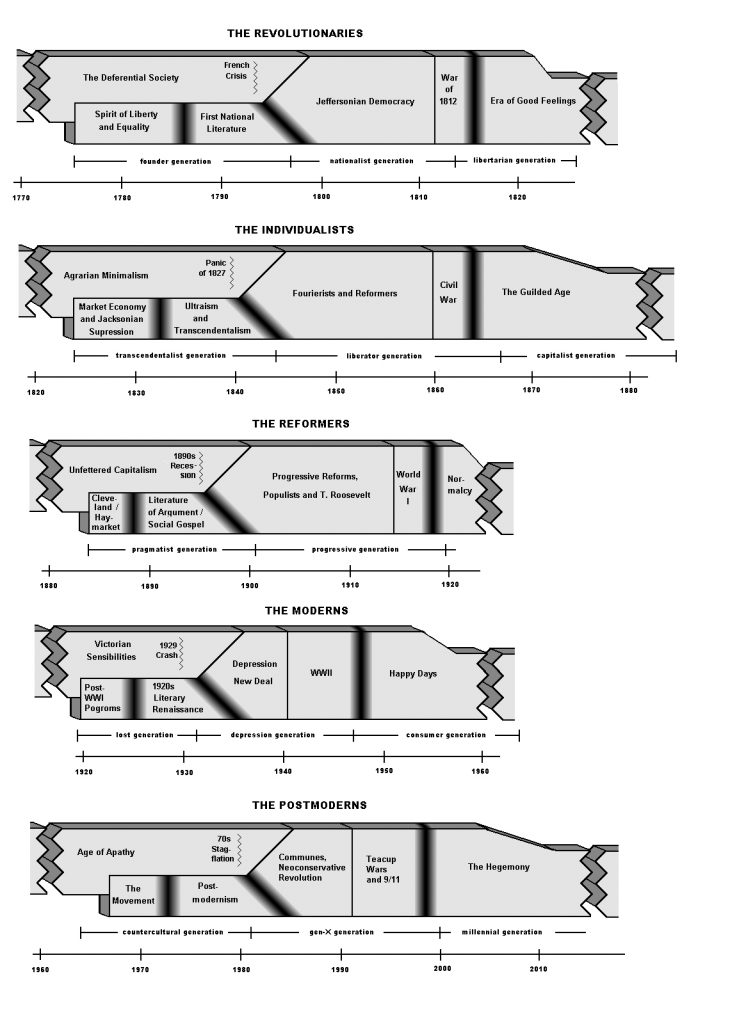Announcing a new edition of...
The Next Generation Gap
Remember the 1960s, when the United States was rocked by a violent explosion of youth culture. Alienated young people, withdrawing from the social agenda of their parents, made “generation gap” a byword in the media.
Has this kind of youth revolution happened before, and could it happen again? These questions have been on my mind for the last twenty years. In the first decade of the new millennium, I tried to find some answers.
Digging into US social history, I discovered that these social revolutions had indeed happened before, and that they occurred in cycles, with each cycle lasting about fifty years. The generations that kick off these revolutions I decided to call called signature generations, or SigGens. I belonged to one of these SigGens. Signature generations, I found, were followed by a pair of generation, a middle generation and a capstone generation, that slotted themselves into the cultural agendas developed by the SigGen.
There have been five of these SigGen cycles in the United States. When I laid the cycles side by side, I discovered some interesting parallels and patterns. At the beginning of the cycle, the new generation is led by a small group of rebels that seize the moral high ground. As the cycle progresses, the rebellion spread itself to larger segments of the new generation. After a decade or two, members of the new generation seize political control and takes over the core cultural agenda of the whole nation. The cost of assuming and holding on to power, however, undercuts the original revolutionary values of the signature generation, leading to a series of compromises that set the stage for the next youth rebellion.
In the chart below, you can see a visual summary of the five SigGen cycles and their stages.
If the cyclical pattern holds, what comes next? Another SigGen, which I refer to as “the digitals,” should arrive in the 2020s. When it appears, we will experience a classic generation gap. This time, though, my own SigGen will experience it from the other side of the divide.
I put my thoughts on these signature generations into book form in 2009 and issued it through a subsidy publisher. I found, though, that packaging up my ideas in book form didn’t stop me from thinking about them. Also, the book only appeared in print form and I was concerned that its content was being bypassed by the shift to ebooks.
When I began to move some of my unpublished and out-of-print books over to the Kindle Direct’s print and ebook formats, I decided that it was time to do a second edition of The Next Generation Gap. This edition is now available thorough Amazon. Links are below.
Perhaps the most significant change in the new edition is that it is considerably shorter. In the first edition, I had included a lot of material on the technologies adopted by the signature generations. While these techologies are important in the careers of the signature generation cycles, they are not essential for understanding how the SigGen cycles work. Operating on the philosophy that “less is more,” I decided to move this material on technologies to another place (where, exactly, I’m not sure at this point) and focus the book more narrowly on the social and cultural events in the cycles.

Use the buttons below to read an excerpt or to purchase the book.
